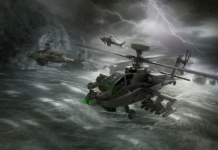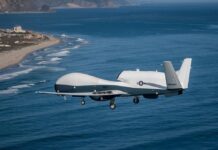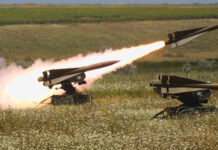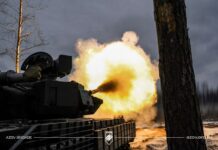The capture of Avdiivka on 17 February 2024 marked a tactical and symbolic victory for Russia. Yet far more significant than the capture of the town itself was that the offensive heralded the deeply troubling trend of the return of Russian air power.

As this column warned back in ESD’s January edition (see ‘Breaking the stalemate’, ESD 1-24), “If left unchecked, Ukraine’s SAM depletion could gradually lead to the dangerous scenario of Russia achieving air superiority. Even if this superiority only begins as localised to certain regions or small portions of the front, it could nonetheless still spell disaster for Ukraine, and radically change the state of the war.”
However, what was somewhat surprising was just how quickly the signs of localised Russian air superiority would begin to emerge. Already by mid-February, in the days immediately before Avdiivka fell, an unusually high number of air strikes were recorded by both Russian and Ukrainian sources, with some citing as many as 500 glide bombs being launched at Ukrainian positions around Avdiivka. Following the town’s capture by Russia, the Institute for the Study of War (ISW) noted in their Russian offensive campaign assessment that, “Russian forces appear to have temporarily established limited and localized air superiority and were able to provide ground troops with close air support during the final days of their offensive operation to capture Avdiivka, likely the first time that Russian forces have done so in Ukraine.”
Not long afterward, on 21 February 2024, President Vladimir Putin gave a speech at Chkalovsky Air Base in Moscow Oblast, in which he thanked the pilots and officers of the Russia Aerospace Forces (VKS), stating: “Thanks to their heroic actions and impeccable preparation, it was possible to achieve a turning point in the most difficult sectors of the front” and claimed the VKS had made “thousands of sorties”. These claims appear to be at least partially backed by open-source conflict mapping projects, which showed an unusually high number of air strikes taking place at various points along the front line, with a particularly high concentration around Avdiivka.
More troubling than the raw numbers is that in the aftermath of Avdiivka’s fall, some footage emerged on social media, which appeared to show Russian aerial assets flying at far higher altitudes than typical so close to the front lines. While air strikes throughout the war are not unheard of, not all air strikes are created equal. Due to the pervasive threat of air defence, both sides have tended to favour using two main types of air strike.
The first is the ‘pop-up strike’, commonly seen with ground attack aircraft such as Su-25, and various helicopters. In this style of strike, the aircraft follows the typical pattern of: ‘fly low, pop up, launch unguided rockets (typically), pop flares, drop back down to low altitude’. Since flying at extremely low altitudes allows aircraft to stay below their opponent’s radar horizon, this type of strike can be used close to the front lines. While it can be somewhat useful as a form of airborne indirect fire support, it is usually not particularly accurate.
The second type is the ‘long-range strike’, which essentially involves using aircraft as missile taxis for long-range standoff weapons. In this type of strike, such weapons are usually launched at medium or high altitudes far from the front lines. Yet due to the large size, weight, and cost of such weapons, along with their lower availability and more complex targeting cycles, these types of strikes are primarily reserved for high-value and static targets.
Ideally, neither would be the go-to choice for a typical sortie. When allowed to fly at medium altitudes, where they can locate and engage targets with relatively small air-launched weapons, aircraft can wreak absolute devastation. The aforementioned footage, along with reports of the Russians using KAB/FAB bombs of various weight classes modified with glide bomb structures, indicates that Russia’s pilots have begun to grow bolder and fly higher.
This boldness has, to an extent, been punished by Ukraine, which claimed to have downed four Su-34 fighter-bombers and two Su-35 fighters in the period from 17-21 February. However, this interception rate is still lower than would be expected even if Russia’s sortie rates were much lower than the “thousands” Putin claimed. Overall, it is difficult to escape the conclusion that a window of opportunity has indeed opened for the VKS.
Ukraine has made no secret of the fact that it is in dire need of more surface-to-air missiles, with calls for their delivery by Ukraine’s leadership growing louder in recent weeks. Russian localised air superiority is a troubling development, but it should be noted that Russia’s ground forces presently do not appear to be in a position to achieve a decisive breakthrough. Having said that, they may not have to. Russia’s recent trend of conducting small-scale bite-and-hold attacks all along the front line keeps Ukraine’s forces under constant pressure and makes it more difficult to establish a firm defensive line. The most likely immediate impact of Russia’s air power returning will be that these attacks become more likely to succeed, empowering Russia’s ground forces to bite bigger chunks out of Ukraine’s territory than before.
Mark Cazalet












